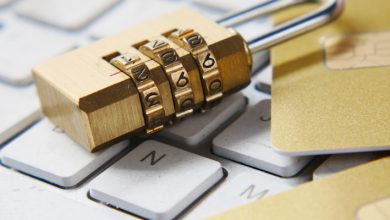What is Two-Factor Authentication (2FA)? Why It’s Essential

- Understanding Two-Factor Authentication
- The Importance of Two-Factor Authentication
- How Two-Factor Authentication Works
- Benefits of Using Two-Factor Authentication
- Types of Two-Factor Authentication
- Implementing Two-Factor Authentication for Better Security
Understanding Two-Factor Authentication
Two-factor authentication (2FA) is an essential security measure that adds an extra layer of protection to your online accounts. With 2FA enabled, you not only need a password to log in but also a second form of verification, such as a code sent to your phone or generated by an authentication app.
By requiring two different factors to access your account, 2FA significantly reduces the risk of unauthorized access, even if your password is compromised. This extra layer of security makes it much harder for hackers to gain control of your accounts and sensitive information.
Understanding how two-factor authentication works is crucial for staying safe online. When you enable 2FA on an account, you typically have the option to receive a verification code via text message, email, or through an authentication app like Google Authenticator or Authy. Once you enter this code along with your password, you can successfully log in to your account.
It’s important to note that 2FA is not foolproof, but it greatly enhances your account security. While no security measure is completely infallible, using 2FA significantly reduces the likelihood of unauthorized access to your accounts. So, take the time to enable two-factor authentication on all your important accounts to protect your valuable information from cyber threats.
The Importance of Two-Factor Authentication
Implementing two-factor authentication is crucial in today’s digital landscape to enhance security measures and protect sensitive information. By requiring two forms of verification, such as a password and a unique code sent to a mobile device, 2FA significantly reduces the risk of unauthorized access to accounts or data breaches.
One of the key benefits of using two-factor authentication is that even if a cybercriminal manages to obtain a user’s password through phishing or other means, they would still need the second factor to gain access. This additional layer of security acts as a barrier, making it much harder for malicious actors to infiltrate systems or steal personal information.
Furthermore, with the increasing frequency of data breaches and cyber attacks, it is more important than ever for individuals and organizations to prioritize cybersecurity. Two-factor authentication provides an extra level of protection that can help prevent unauthorized access, identity theft, and financial loss.
Overall, the importance of two-factor authentication cannot be overstated. It is a simple yet effective way to enhance security and safeguard sensitive data in an increasingly digital world. By incorporating 2FA into your online accounts and systems, you can significantly reduce the risk of falling victim to cyber threats and protect your valuable information.
How Two-Factor Authentication Works
Two-Factor Authentication (2FA) works by adding an extra layer of security to your online accounts. When you enable 2FA, you will be required to provide two different types of information to verify your identity.
The first factor is something you know, such as your password. The second factor is something you have, such as a unique code sent to your phone via text message or generated by an authentication app.
By requiring both factors for authentication, 2FA makes it much harder for hackers to gain access to your accounts. Even if they manage to steal your password, they would still need the second factor to successfully log in.
Two-Factor Authentication is essential for protecting your sensitive information and preventing unauthorized access to your accounts. It is a simple yet effective way to enhance your online security and reduce the risk of falling victim to cyber attacks.
Benefits of Using Two-Factor Authentication
Implementing Two-Factor Authentication (2FA) provides an additional layer of security beyond just a password. By requiring users to provide a second form of verification, such as a code sent to their phone or a fingerprint scan, 2FA significantly reduces the risk of unauthorized access to accounts.
One of the main benefits of using 2FA is that even if a cybercriminal manages to steal a user’s password, they would still need the second factor to gain access. This extra step makes it much more difficult for hackers to compromise accounts, adding a crucial barrier to protect sensitive information.
Furthermore, 2FA can help prevent identity theft and phishing attacks. Since the second factor is typically something only the legitimate user has access to, it becomes nearly impossible for malicious actors to impersonate them and gain unauthorized entry.
Overall, the adoption of Two-Factor Authentication is essential in today’s digital landscape to enhance security and safeguard personal and sensitive data. It is a simple yet effective way to ensure that only authorized individuals can access online accounts, providing peace of mind for users and businesses alike.
Types of Two-Factor Authentication
Two-factor authentication (2FA) comes in different forms to provide an extra layer of security for your online accounts. The most common types of 2FA include something you know, something you have, and something you are.
One type of 2FA involves something you know, such as a password or a PIN. This is the most basic form of 2FA and is often used in combination with another factor for added security. By requiring users to enter both a password and a one-time code sent to their phone, for example, websites can ensure that only authorized users are able to access sensitive information.
Another type of 2FA is something you have, which typically involves a physical device like a smartphone or a USB security key. This device generates a unique code that must be entered along with your password to log in to your account. By requiring both something you know and something you have, websites can significantly reduce the risk of unauthorized access.
Finally, something you are is another type of 2FA that involves biometric data, such as fingerprints or facial recognition. This form of authentication is becoming increasingly popular as more devices come equipped with biometric sensors. By requiring users to verify their identity using something unique to them, websites can add an extra layer of security to their login process.
In conclusion, two-factor authentication is essential for protecting your online accounts from unauthorized access. By implementing multiple factors of authentication, such as something you know, something you have, and something you are, you can significantly enhance the security of your accounts and keep your personal information safe from cyber threats.
Implementing Two-Factor Authentication for Better Security
Implementing two-factor authentication (2FA) is crucial for enhancing the security of your online accounts. By requiring users to provide two different authentication factors, such as a password and a unique code sent to their mobile device, 2FA significantly reduces the risk of unauthorized access. This extra layer of security makes it much harder for hackers to breach your accounts, even if they manage to obtain your password through phishing or other means.
In addition to protecting your personal information, implementing 2FA can also safeguard sensitive data, financial details, and other confidential information stored in your online accounts. With the increasing number of cyberattacks targeting individuals and organizations, it is more important than ever to take proactive measures to secure your online presence. By enabling 2FA on all your accounts that support it, you can significantly reduce the likelihood of falling victim to cybercrime.
To set up 2FA, simply follow the instructions provided by each service or platform that offers this security feature. Typically, you will need to enable 2FA in your account settings and then link your mobile device to receive the authentication codes. Once activated, you will be prompted to enter this unique code in addition to your password whenever you log in to your account. This simple yet effective process adds an extra layer of protection that can make a world of difference in safeguarding your online identity and data.



